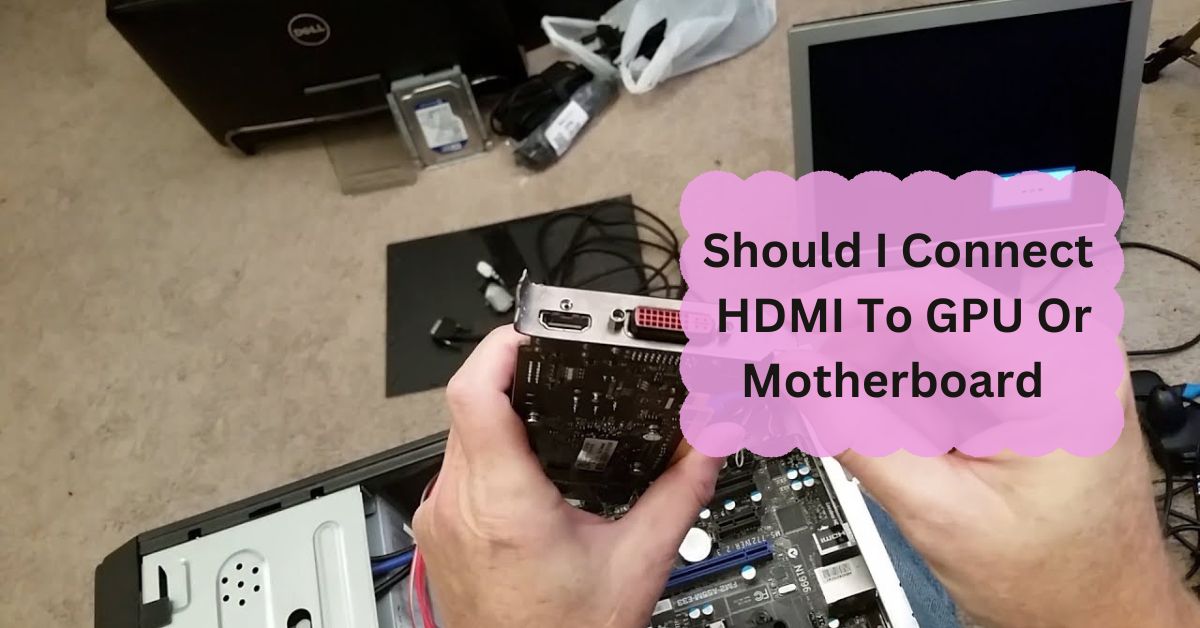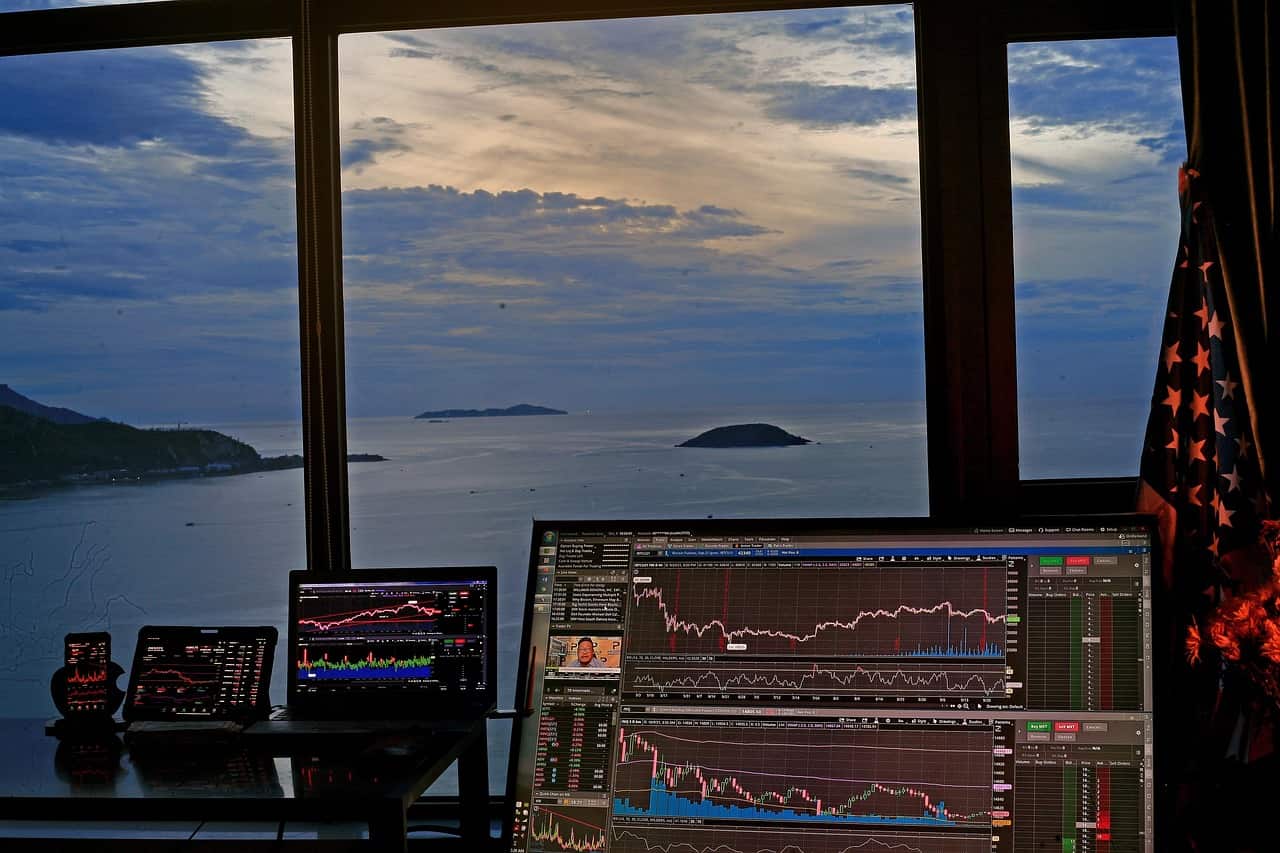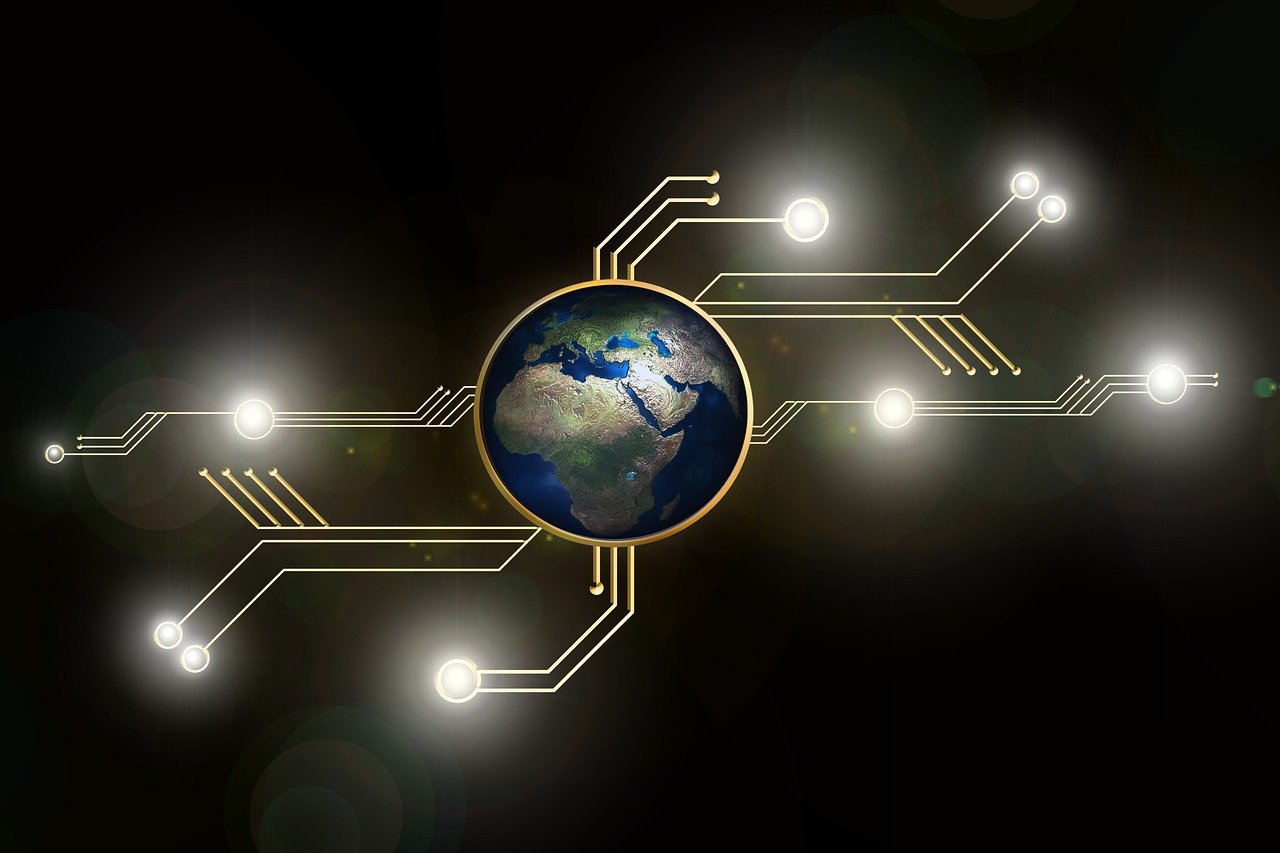Choosing the right HDMI connection can impact your computer’s performance and visual quality.
You should connect the HDMI cable to the GPU, not the motherboard. The GPU provides better graphics performance, especially for gaming or video editing. The motherboard’s HDMI port is only for basic display functions if you don’t have a GPU.
In this article, we will discuss “Should I Connect HDMI To GPU Or Motherboard”.
Table of Contents
Understanding HDMI Ports:
What is an HDMI Port?
HDMI (High-Definition Multimedia Interface) is a standard for transmitting high-quality audio and video from one device to another. It supports various resolutions and audio formats, making it a popular choice for connecting monitors, TVs, and other display devices.
HDMI Versions and Their Differences:
HDMI comes in several versions, each with different capabilities. For example, HDMI 1.4 supports 4K resolution at 30Hz, while HDMI 2.0 supports 4K at 60Hz and HDR. Knowing the version of your HDMI ports can help you choose the best connection for your needs.
GPU vs. Motherboard HDMI Ports:
What is a GPU?
A GPU (Graphics Processing Unit) is a dedicated hardware component designed to handle graphics processing tasks. It significantly improves visual performance and is essential for gaming, video editing, and other graphics-intensive applications.
What is a Motherboard HDMI Port?
A motherboard HDMI port is integrated into the motherboard and is powered by the CPU’s integrated graphics. It is typically less powerful than a dedicated GPU but sufficient for basic computing tasks.
Advantages of Connecting HDMI to GPU:
Enhanced Graphics Performance:
Connecting your HDMI cable to the GPU ensures that you’re using the full power of your graphics card. This is crucial for tasks requiring high visual fidelity, such as gaming and 3D rendering.
Reduced Latency:
A dedicated GPU often has lower latency compared to integrated graphics, resulting in a smoother and more responsive experience, especially noticeable in fast-paced games.
Better Resolution and Refresh Rates:
GPUs generally support higher resolutions and refresh rates than integrated graphics. Connecting to your GPU can provide clearer images and smoother motion.
Read: Does GPU Hotspot Matter – A Complete Of Guide 2024!
Advantages of Connecting HDMI to Motherboard:
Simplicity and Convenience:
Using the motherboard HDMI port is straightforward and requires no additional setup. It’s an easy option for those who don’t need high-end graphics performance.
Potential Cost Savings:
If you’re not using a dedicated GPU, connecting to the motherboard can save money. It eliminates the need to invest in a separate graphics card, which can be expensive.
Suitable for Basic Uses:
Integrated graphics are usually sufficient for everyday tasks like browsing the web, watching videos, and using office applications.
When to Connect HDMI to GPU:
Gaming and High-Performance Tasks:
For an optimal gaming experience, connect your HDMI to the GPU. It ensures that you benefit from the card’s superior processing power and graphical capabilities.
Professional Graphics Work:
Tasks like 3D modeling, video editing, and high-resolution photo editing benefit from the enhanced performance of a dedicated GPU.
Video Editing and Rendering:
If you’re involved in video production, the GPU connection is essential for handling complex rendering tasks and maintaining high-quality outputs.
When to Connect HDMI to Motherboard:
Everyday Computing Tasks:
For routine tasks, such as checking email or browsing social media, using the motherboard HDMI port is generally sufficient.
Using Integrated Graphics:
If you don’t have a dedicated GPU, the motherboard’s HDMI port is your only option for display output.
Casual Media Consumption:
Watching videos or streaming content doesn’t typically require the advanced capabilities of a dedicated GPU, making the motherboard HDMI port a practical choice.
Comparing GPU and motherboard-integrated graphics:
Performance Differences:
Dedicated GPUs offer superior performance compared to integrated graphics, providing better frame rates and higher resolution support.
Impact on System Resources:
Using a GPU offloads the graphical processing from the CPU, freeing up system resources for other tasks. Integrated graphics rely on the CPU, which can impact overall system performance.
Quality of Visuals:
GPUs provide higher quality visuals, including better color accuracy and detail, compared to integrated graphics.
How to Connect HDMI to Your GPU:
Step-by-Step Instructions:
- Power off your computer and unplug it from the wall.
- Locate the HDMI port on your GPU.
- Connect one end of the HDMI cable to the GPU.
- Connect the other end of the HDMI cable to your monitor.
- Power on your computer and monitor. Ensure that the input source on your monitor is set to HDMI.
Common Issues and Troubleshooting:
If you experience issues, ensure the cable is securely connected and that the monitor is set to the correct input source. Check the GPU drivers to ensure they are up to date.
How to Connect HDMI to Your Motherboard:
Step-by-Step Instructions:
- Power off your computer and unplug it.
- Locate the HDMI port on the motherboard, usually found at the back panel of the case.
- Connect the HDMI cable to the motherboard port.
- Connect the other end to your monitor.
- Power on your computer and monitor, and select HDMI as the input source on the monitor.
Common Issues and Troubleshooting:
If you encounter problems, make sure the integrated graphics are enabled in the BIOS/UEFI settings and check that the cable connections are secure.
Impact on System Performance:
GPU Load and System Performance:
Connecting HDMI to the GPU generally results in better performance, as the GPU handles all graphical tasks, reducing the load on the CPU and improving overall system responsiveness.
Integrated Graphics and CPU Performance:
Using integrated graphics can put more strain on the CPU, as it handles both processing and graphics tasks. This can affect system performance, especially in graphics-intensive applications.
Should I plug HDMI into mobo or GPU?
Plug your HDMI into the GPU, not the motherboard. The GPU provides better performance and is designed to handle video output for gaming and other graphic-intensive tasks.
Should I plug my monitor into my GPU or motherboard?
Plug your monitor into the GPU, not the motherboard. The GPU is responsible for rendering graphics, ensuring optimal performance for gaming, video editing, and other graphic-heavy applications.
Where should I plug my HDMI?
Plug your HDMI cable into the GPU. This ensures better video performance and utilizes the dedicated graphics card for rendering tasks.
Should I use HDMI or DisplayPort for GPU?
Use DisplayPort for better performance and higher refresh rates, especially for gaming. HDMI is also fine but may have limitations compared to DisplayPort.
Should I connect HDMI to GPU or motherboard for gaming?
Connect HDMI to the GPU for gaming. The GPU is built for handling gaming graphics and provides better performance than the motherboard’s integrated graphics.
HDMI plugged into graphics card but no display?
Check if the GPU is properly seated and the monitor is set to the correct input source. Also, ensure the GPU drivers are installed.
Can I use motherboard HDMI and graphics card HDMI at the same time?
Yes, you can use both, but it’s recommended to use the GPU for better performance. The motherboard HDMI might use integrated graphics, which are less powerful.
What happens if you plug HDMI into motherboard?
If you plug HDMI into the motherboard, it will use the integrated graphics, which are less powerful than the GPU. This may result in lower performance, especially for gaming.
How to plug HDMI into graphics card?
Locate the HDMI port on your GPU, usually found on the back of your PC case, and plug the HDMI cable into it. Ensure it’s securely connected.
Do you plug your monitor into graphics card or motherboard?
Plug your monitor into the graphics card for optimal performance. The graphics card provides better video output, especially for gaming and graphic-intensive tasks.
FAQs:
1. Can I use both HDMI ports simultaneously?
Yes, you can connect both HDMI ports to different monitors, but you may need to configure your display settings in the operating system.
2. Will using HDMI on the GPU improve gaming performance?
Yes, connecting HDMI to the GPU will provide better gaming performance due to the dedicated processing power of the graphics card.
3. What if my monitor only has a VGA port?
You can use an HDMI to VGA adapter to connect your HDMI output to a VGA monitor.
4. Is there a difference between HDMI 1.4 and HDMI 2.0?
Yes, HDMI 2.0 supports higher resolutions and refresh rates compared to HDMI 1.4.
5. Can I use integrated graphics for video editing?
While you can use integrated graphics, a dedicated GPU is recommended for better performance in video editing tasks.
Conclusion:
For the best performance and visual quality, always connect your HDMI cable to the GPU, especially if you’re gaming, editing videos, or working with graphics. The GPU provides enhanced graphics performance, higher resolutions, and smoother experiences compared to the motherboard’s HDMI port, which is only suitable for basic tasks. Choosing the right connection can significantly improve your overall computing experience.


